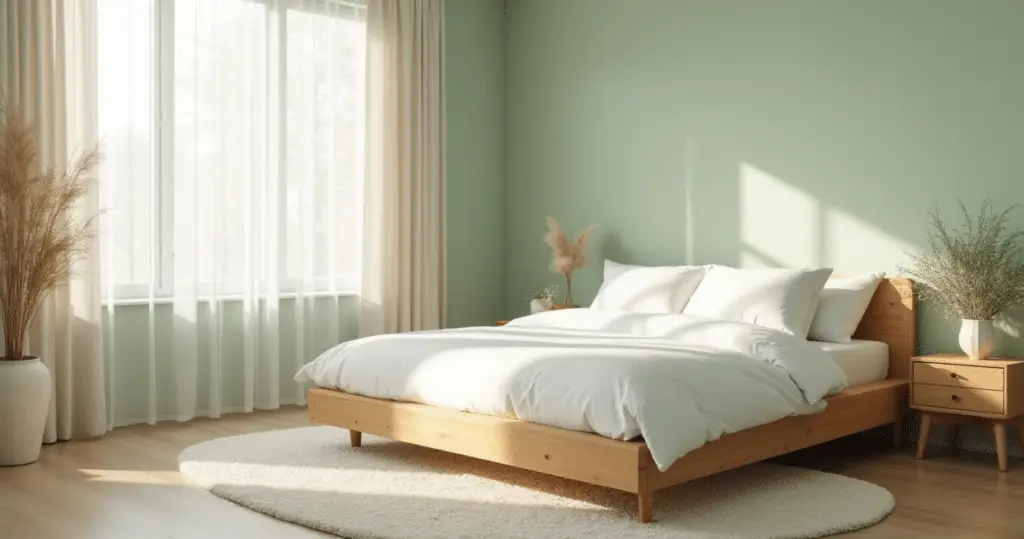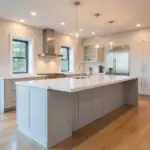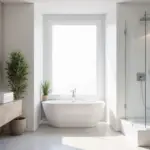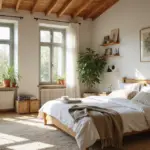Your bedroom should be more than just a place to collapse after a long day—it’s your personal retreat, the space where you begin and end each chapter of your life. Yet so many of us settle for bedrooms that feel more like afterthoughts than sanctuaries. The difference between a truly restorative space and a merely functional one lies in understanding how thoughtful design choices can transform not just how a room looks, but how it makes you feel.
The desert teaches us that beauty emerges from intention, not excess. In the vast landscapes I’ve studied, every element serves a purpose while contributing to a greater harmony. Your bedroom deserves this same thoughtful curation—each choice working together to create an environment that actively supports your well-being, reflects your authentic self, and adapts to the rhythms of your daily life.
These 22 bedroom aesthetic ideas will guide you through creating a space that honors both form and function, drawing from principles of climate-conscious design and cross-cultural aesthetics. Whether you’re working with a sun-drenched master suite or a cozy urban apartment, these strategies will help you craft a bedroom that feels like a true extension of who you are.
1. Choose Earth-Toned Color Palettes for Natural Serenity
The foundation of any peaceful bedroom begins with colors that ground rather than stimulate. Earth tones—the warm terracottas, sage greens, and sun-bleached neutrals—create an immediate sense of calm by connecting us to the natural world. These hues work with our circadian rhythms rather than against them, supporting the transition from day to rest that healthy sleep requires.
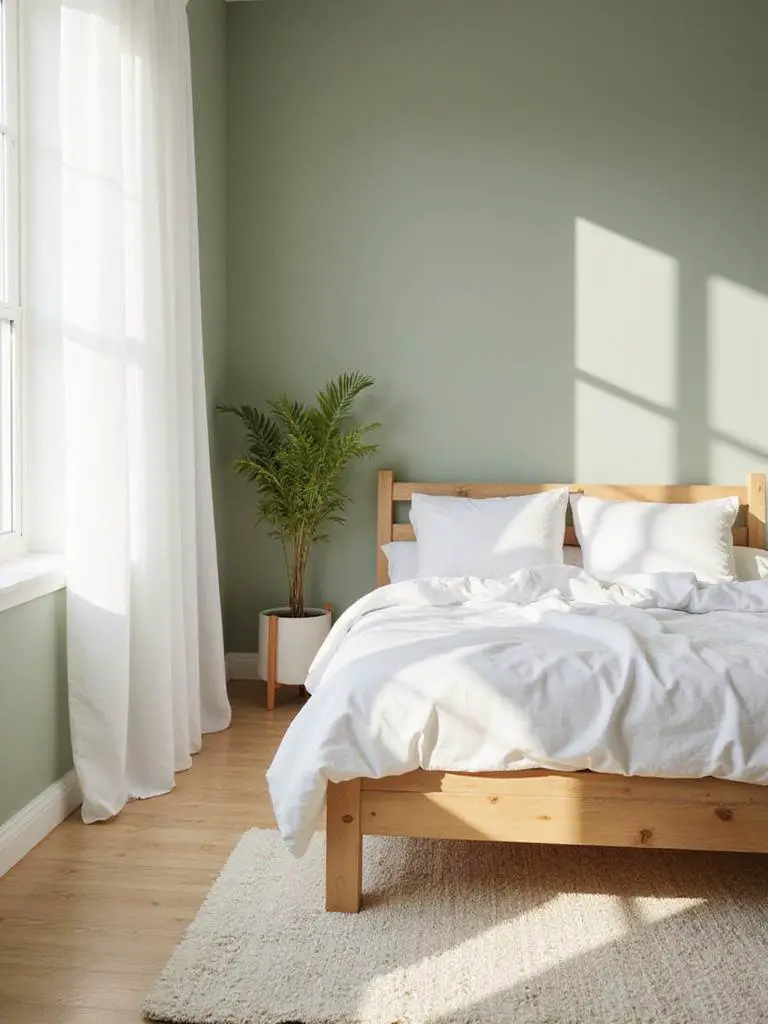
In my practice, I’ve observed how dramatically the right color palette can shift a room’s energy. Cool blues and grays, while popular, can feel sterile in bedrooms lacking natural warmth. Instead, consider the subtle variations found in desert landscapes: the soft blush of dawn on sandstone, the silvery green of sage after rain, or the warm cream of weathered limestone. These colors possess an inherent warmth that makes spaces feel embracing rather than stark, while their muted intensity promotes the mental quiet essential for rest.
The designer’s secret here is to layer these earth tones in varying intensities rather than committing to a single shade. Paint your walls in the lightest version of your chosen palette, then introduce deeper tones through textiles and accessories, creating a sense of depth that feels both sophisticated and naturally restful.
2. Optimize Natural Light While Managing Heat Gain
Light is the most powerful tool in your design arsenal, but in our climate-conscious world, we must balance illumination with thermal comfort. The goal is maximizing the mood-lifting benefits of natural light while preventing your bedroom from becoming a greenhouse. This requires strategic thinking about window treatments, glass selection, and the orientation of your space.
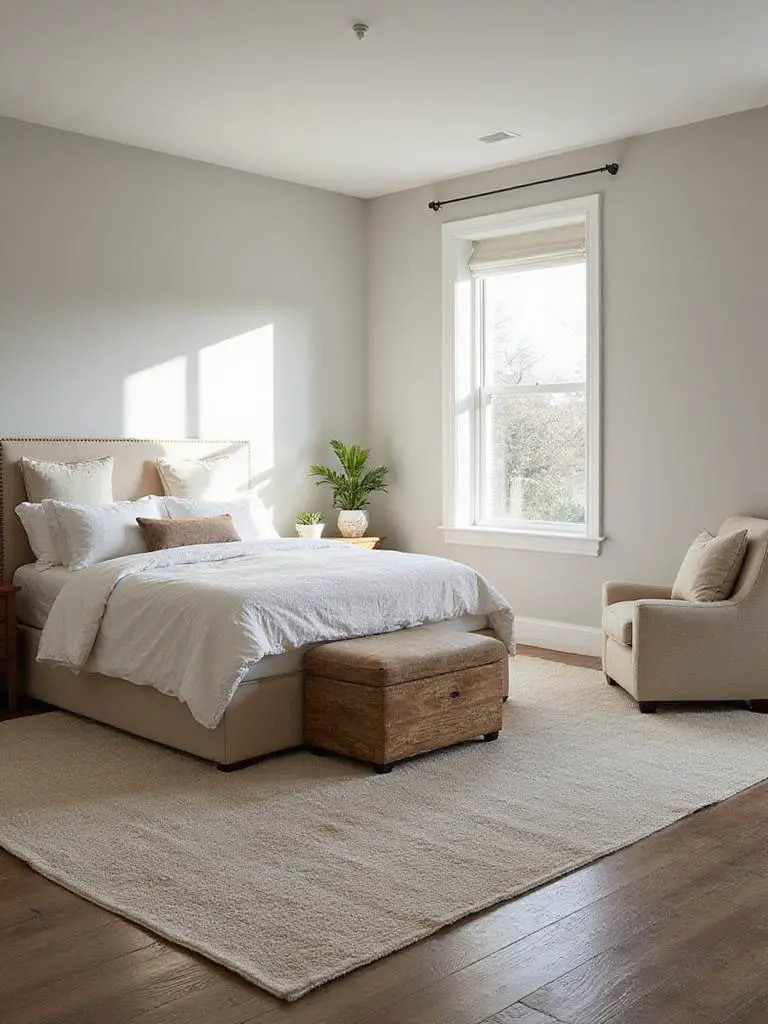
Start by understanding your room’s light patterns throughout the day. South-facing windows flood spaces with consistent light but can create uncomfortable heat buildup. East-facing exposures offer gentle morning light that supports healthy wake cycles, while west-facing windows can be challenging with their intense afternoon glare. For each exposure, layer your window treatments: sheer panels for privacy and glare control, paired with heavier drapes or cellular shades for thermal regulation. The key is flexibility—being able to modulate light and heat independently as conditions change.
Consider the thermal mass of your space as well. Light-colored walls and ceilings reflect rather than absorb heat, while strategic placement of thermal mass elements like stone accent walls can help moderate temperature swings, creating a more stable and comfortable environment for sleep.
3. Layer Textiles for Temperature and Comfort Regulation
Unlike spaces designed for constant climate control, a thoughtfully designed bedroom adapts to seasonal and daily temperature variations through strategic textile layering. This approach not only enhances comfort but creates visual depth and tactile richness that makes a space feel more luxurious and personally curated.
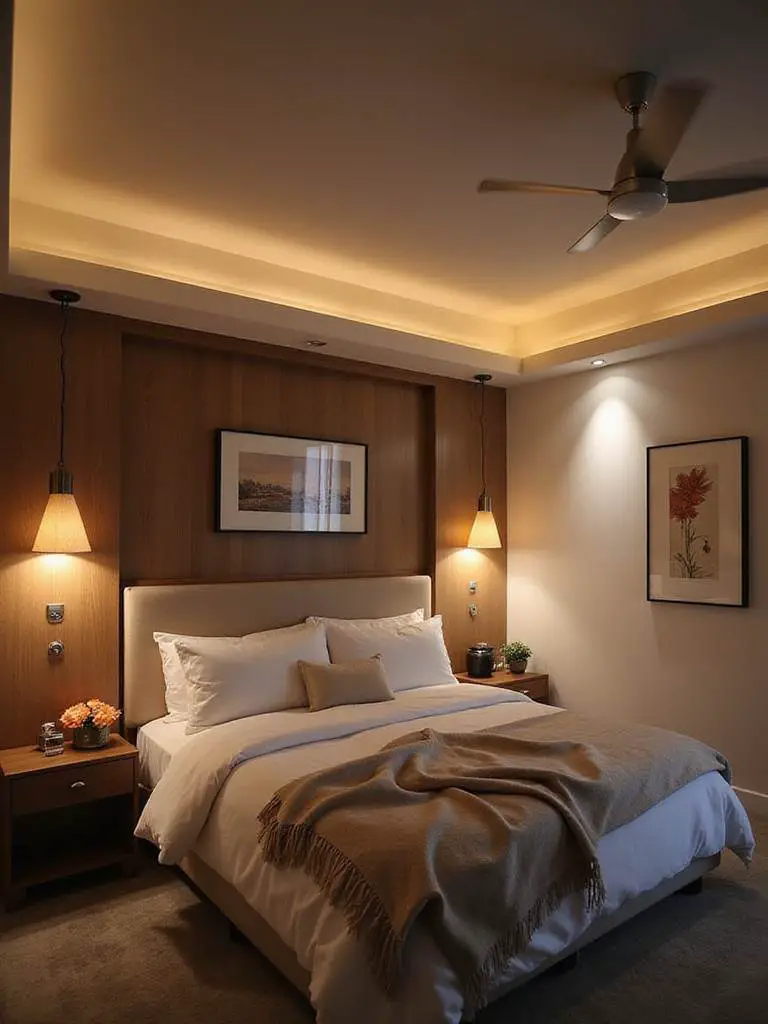
The foundation of effective textile layering begins with understanding the thermal properties of different fibers. Linen and cotton provide breathability for warm seasons, while wool offers insulation without bulk during cooler months. Layer these strategically: lightweight cotton or linen sheets as your base, a medium-weight blanket for shoulder seasons, and a down or wool comforter for winter warmth. The beauty lies in the ability to adjust your comfort level by adding or removing layers rather than relying solely on mechanical climate control.
Beyond temperature regulation, textile layering creates opportunities for introducing pattern, texture, and color in measured doses. A neutral linen duvet becomes a canvas for seasonal throws—perhaps a hand-woven wool blanket in winter or a lightweight cotton coverlet in summer. This approach allows your bedroom aesthetic ideas to evolve with the seasons while maintaining a cohesive foundation.
4. Integrate Living Elements Through Strategic Plant Placement
Plants do more than purify air—they create microclimates, add humidity, and provide the psychological benefits of biophilic connection. In bedroom design, the challenge is selecting species that thrive in lower light conditions while contributing to the room’s aesthetic without overwhelming the space intended for rest.
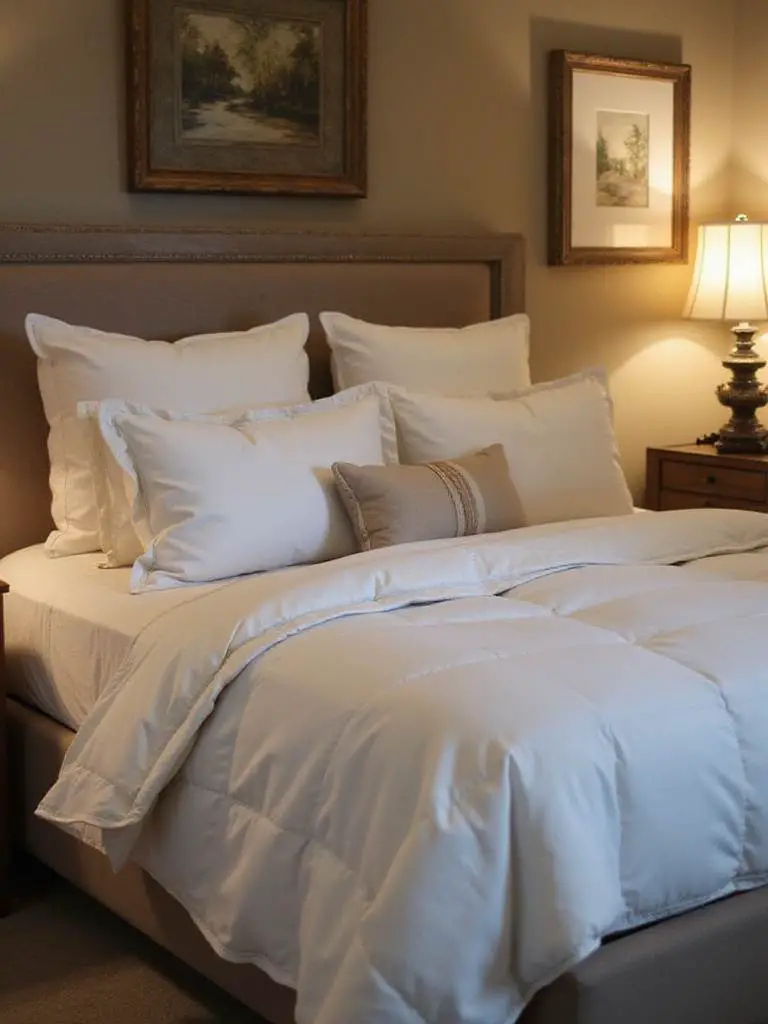
Focus on plants that actively improve nighttime air quality. Snake plants and aloe vera release oxygen during nighttime hours, making them ideal bedroom companions. ZZ plants and pothos tolerate the lower light levels typical of bedrooms while adding lush greenery. Position larger specimens like fiddle leaf figs or monstera in corners where they can create dramatic silhouettes without interfering with daily movement patterns. Smaller plants work beautifully on nightstands or dressers, but avoid anything with strong fragrances that might disrupt sleep.
The placement strategy should consider both the plants’ needs and your room’s circulation patterns. Group plants with similar water and light requirements together, creating mini-ecosystems that are easier to maintain while providing visual impact. Use varying heights and pot materials to create interest—perhaps a tall plant in a woven basket balanced by smaller specimens in ceramic or concrete planters.
5. Design Furniture Layout for Optimal Flow and Function
Furniture arrangement in bedrooms requires balancing the desire for spaciousness with the need for functionality. The goal is creating clear pathways that feel generous while ensuring every piece serves a purpose. This is particularly crucial in smaller spaces where every square foot must work efficiently.
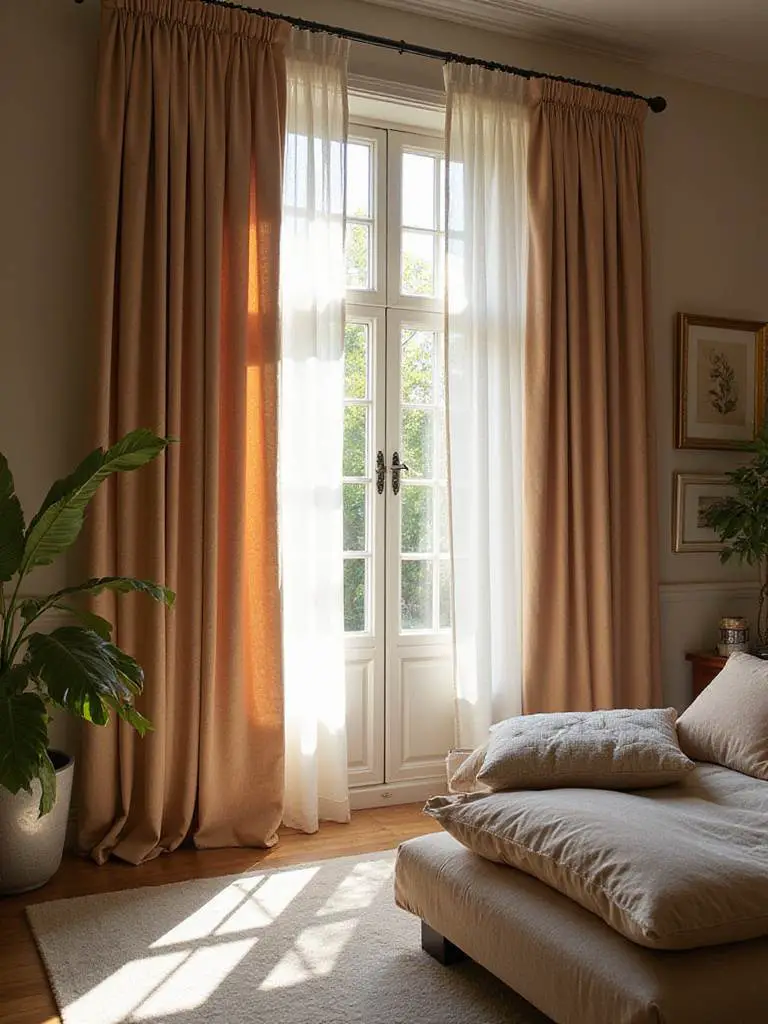
Begin with your bed placement, considering both feng shui principles and practical concerns. Position the bed where you can see the door without being directly in line with it, creating a sense of security while maintaining good energy flow. Allow at least 30 inches of clearance around the bed for comfortable movement, and consider the relationship between your bed and natural light sources. Morning light should gently wake you rather than create harsh glare across your pillow.
Secondary furniture should support your daily routines without creating obstacles. A reading chair needs adequate light and a side table for beverages and books. Dressers should be positioned for easy access to clothing while maintaining clear sight lines across the room. In smaller spaces, consider multi-functional pieces: an ottoman with storage, a bench at the foot of the bed that can hold clothing or provide seating.
6. Create Ambient Lighting Layers for Mood Control
Lighting design in bedrooms must serve multiple functions: supporting daily activities, promoting relaxation, and enhancing the room’s aesthetic appeal. The most successful schemes layer different light sources, each controllable independently to create the perfect ambiance for any time of day or activity.
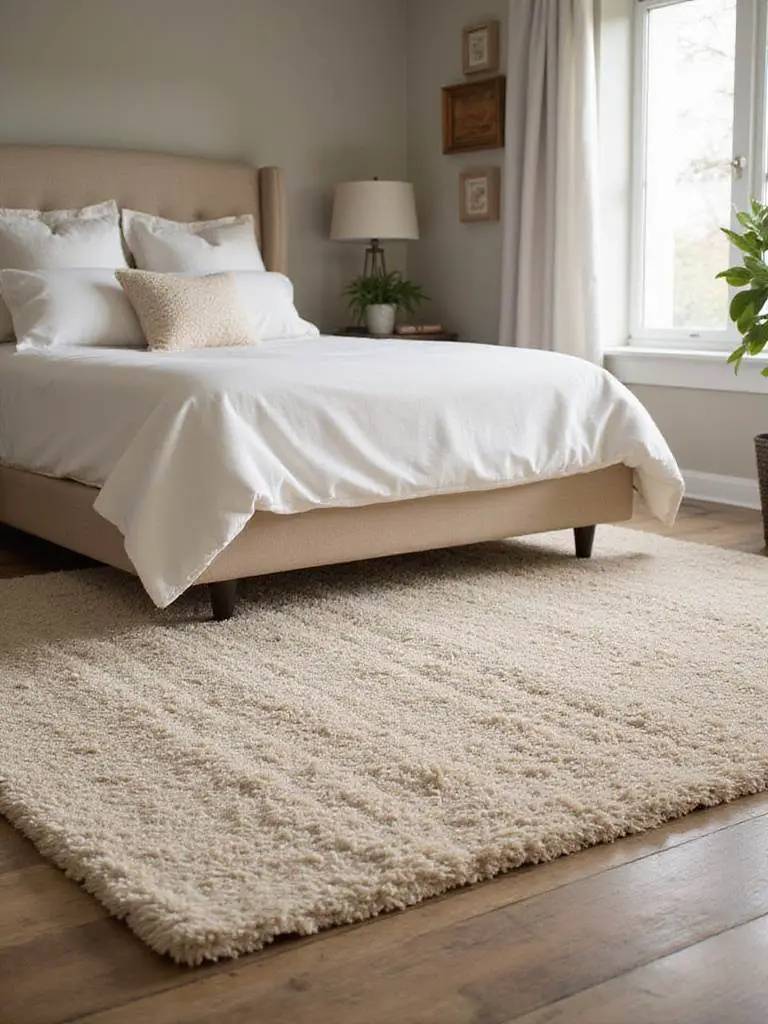
Start with ambient lighting that provides overall illumination without harsh shadows. Recessed ceiling lights with warm-toned LED bulbs work well, but they must be dimmable. Add task lighting for specific activities: reading lights by the bed, perhaps wall-mounted swing-arm sconces that don’t take up nightstand space. Accent lighting creates drama and visual interest—LED strips behind headboards, uplights in corners, or picture lights highlighting artwork.
The key to successful bedroom lighting lies in color temperature control. Cooler light (3000K-4000K) supports morning activities and helps you wake up, while warmer light (2200K-2700K) promotes relaxation in the evening. Smart bulbs that adjust color temperature automatically can support your natural circadian rhythms, gradually shifting from cool to warm as bedtime approaches.
7. Select Sustainable Materials That Age Beautifully
Choosing materials that improve with age rather than deteriorate creates a bedroom that becomes more beautiful over time while reducing environmental impact. This approach requires thinking beyond initial appearance to consider how materials will patina, wear, and adapt to daily use.
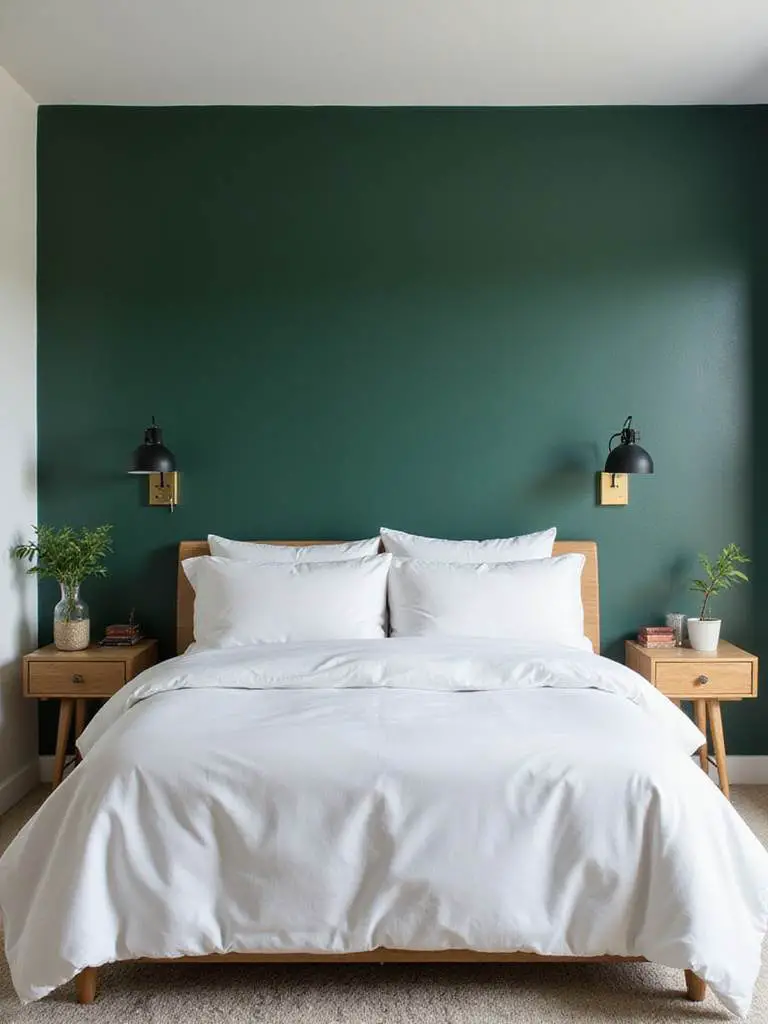
Natural materials like solid wood, linen, and wool develop character through use, creating the lived-in beauty that makes spaces feel authentic rather than showroom-perfect. A solid walnut nightstand will develop a richer patina over years of use, while linen bedding becomes softer and more comfortable with each washing. These materials also tend to be more breathable and temperature-regulating than synthetic alternatives, contributing to better sleep comfort.
Consider the lifecycle of your choices. Reclaimed wood for accent walls or headboards carries history while reducing demand for new materials. Vintage or antique furniture pieces often feature superior construction and materials compared to contemporary mass-produced items. When buying new, look for certifications like FSC (Forest Stewardship Council) for wood products or GREENGUARD for low-emission materials.
8. Incorporate Handcrafted Elements for Authentic Character
Mass-produced furniture and decor, while convenient, often lacks the subtle irregularities and craftsmanship details that make spaces feel personal and authentic. Incorporating handcrafted elements—whether through artisan-made textiles, hand-thrown ceramics, or custom woodwork—adds layers of meaning and visual interest that can’t be replicated by machines.
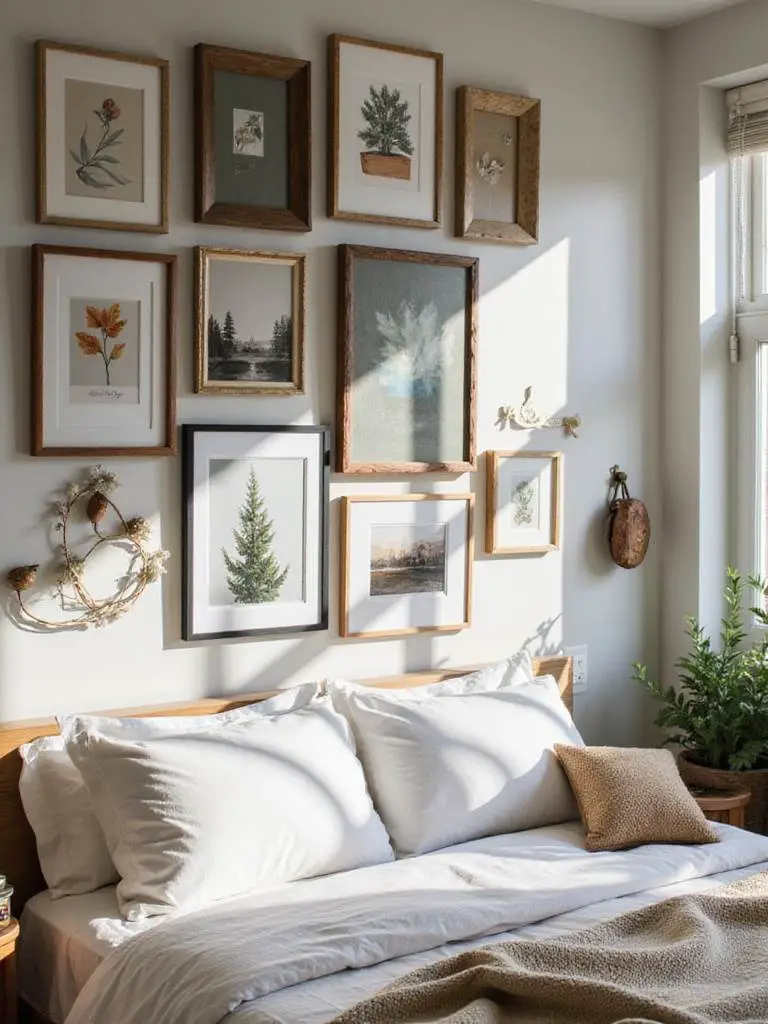
Seek out pieces that tell stories of their creation. A hand-woven textile carries the maker’s technique and cultural heritage. A ceramic lamp bears the subtle finger marks of the potter’s wheel. These imperfections aren’t flaws—they’re signatures of human creativity that add warmth and authenticity to your space. Local artisans often work with regional materials and techniques, creating pieces that connect your bedroom to its geographic and cultural context.
The integration of handcrafted elements doesn’t require a complete room overhaul. Start with smaller pieces: a hand-thrown ceramic vase, a woven wall hanging, or artisan-made drawer pulls. These details accumulate to create a sense of curation and intentionality that transforms a bedroom from generic to deeply personal.
9. Design Storage Solutions That Enhance Rather Than Hide
Storage in bedrooms shouldn’t feel like an afterthought or apology. The most successful solutions integrate seamlessly with the room’s aesthetic while providing the organization essential for a peaceful environment. This requires thinking beyond basic functionality to consider how storage elements contribute to the overall design narrative.
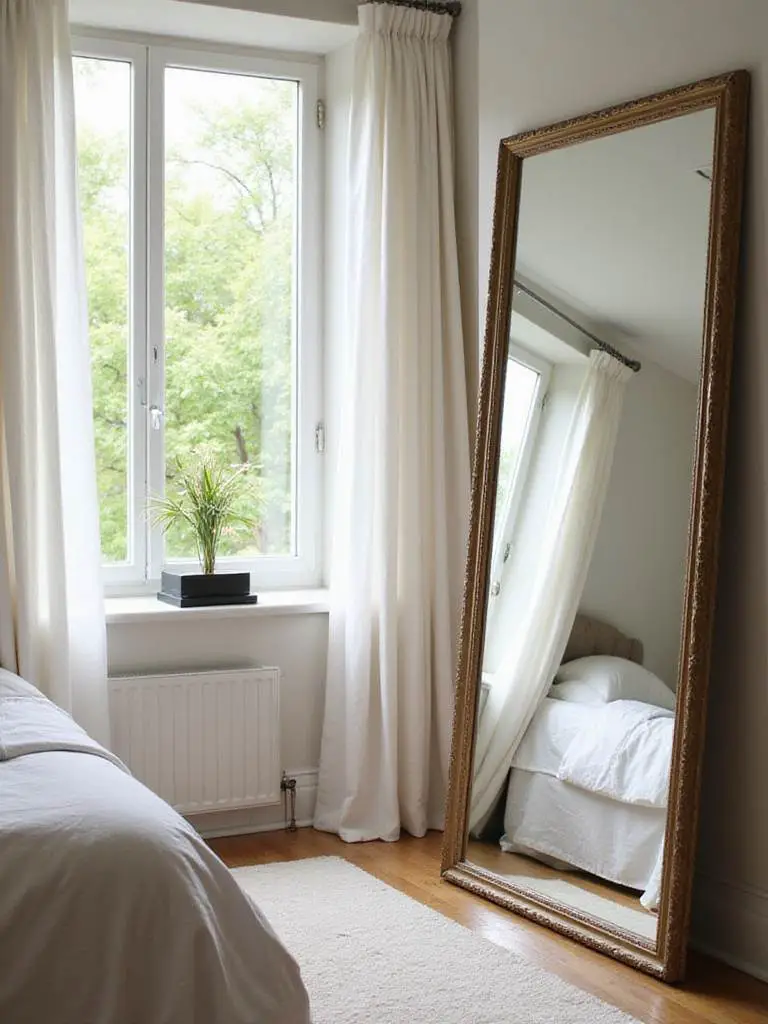
Built-in solutions often provide the cleanest integration. A window seat with hidden storage serves multiple functions while appearing to be a purely aesthetic choice. Floating nightstands with concealed drawers maintain visual lightness while providing essential bedside storage. Under-bed storage can be elegant when designed as part of the bed frame rather than added as an afterthought.
Open storage requires careful curation but can become a design feature in itself. A beautiful bookshelf displaying carefully chosen objects becomes sculptural wall art. Clothing displayed on a handsome valet or in an attractive armoire can add color and texture rather than visual clutter. The key is maintaining the discipline to display only items that contribute to the room’s aesthetic story.
10. Establish Dedicated Zones for Different Activities
Modern bedrooms often serve multiple functions beyond sleep—reading, working, dressing, exercising. The challenge is creating distinct zones for these activities without fragmenting the space or compromising its restful character. Successful zoning uses subtle visual cues rather than physical barriers to define different areas.
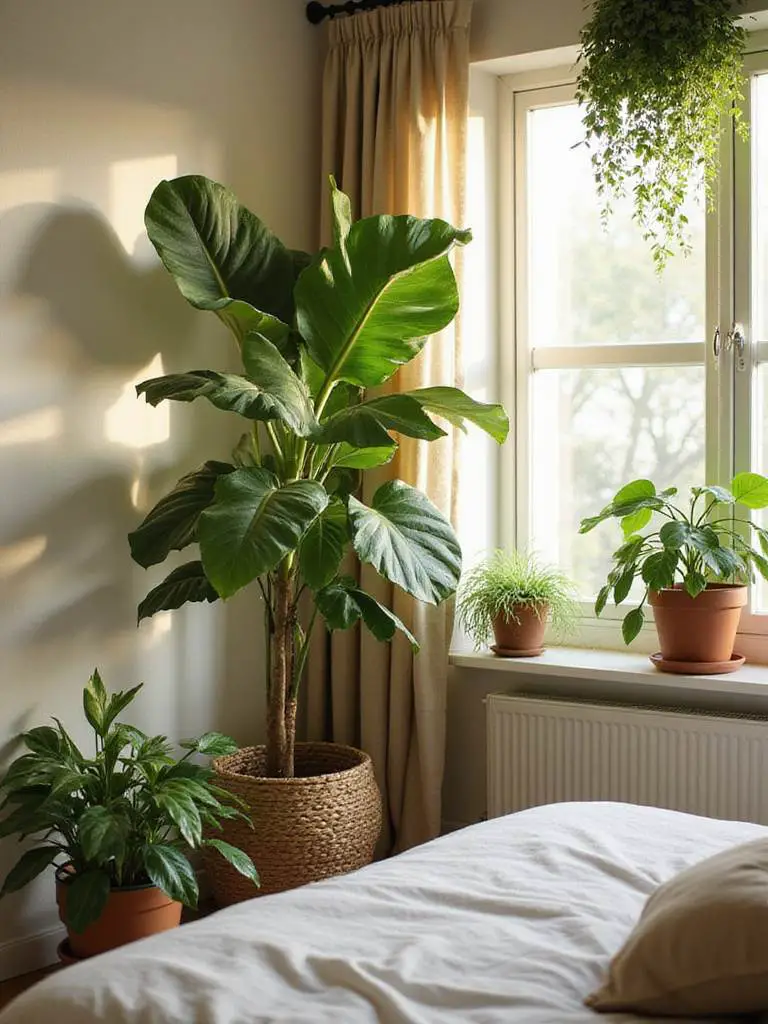
A reading nook might be defined by a comfortable chair, good lighting, and a small side table, positioned to take advantage of natural light while maintaining privacy from the bed area. A dressing area could be created with a beautiful mirror, adequate lighting, and storage for frequently used items. The key is ensuring each zone has what it needs to function well without creating visual chaos.
Lighting plays a crucial role in zone definition. Different areas can have distinct lighting schemes that support their specific functions while contributing to the room’s overall ambiance. Rugs, ceiling treatments, or subtle color variations can also help define zones without creating hard boundaries that make the room feel chopped up.
11. Choose Window Treatments for Privacy and Light Control
Window treatments in bedrooms must balance multiple needs: privacy, light control, thermal regulation, and aesthetic appeal. The most successful solutions layer different treatments to provide maximum flexibility while enhancing the room’s design rather than simply covering the windows.

For privacy without complete light blocking, consider cellular shades in neutral tones paired with flowing curtains in natural fibers. This combination allows for precise light control throughout the day while providing the softness and movement that makes rooms feel alive. The cellular shades handle the technical requirements—insulation, privacy, light control—while the curtains provide aesthetic appeal and the ability to completely darken the room when needed.
Consider the architecture of your windows when selecting treatments. Tall, narrow windows might benefit from curtains hung high and wide to create the illusion of larger openings. Wide windows could be divided with multiple panels for better proportion and easier operation. The goal is enhancing your windows’ natural beauty while providing the functionality essential for bedroom comfort.
12. Curate Art and Objects That Reflect Personal Journey
The objects you choose to live with should tell the story of who you are and what you value. In bedrooms, this curation becomes particularly important because these items will be among the first things you see each morning and the last each night. They should inspire, comfort, and reflect your authentic self rather than simply filling space.
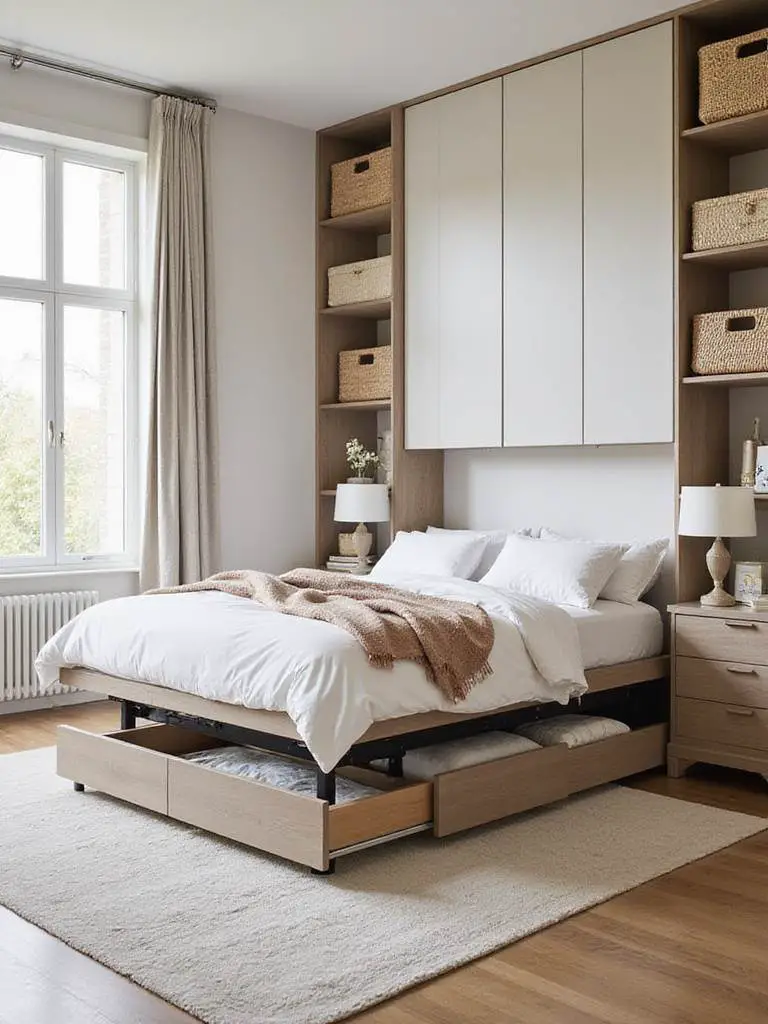
Travel souvenirs, family photographs, and meaningful artwork create layers of personal history that make a space feel truly yours. But curation requires discipline—not every meaningful object belongs in the bedroom. Choose pieces that contribute to the room’s peaceful character while holding personal significance. A single powerful photograph might have more impact than a gallery wall of smaller images.
Consider the emotional impact of your choices. Abstract art might promote contemplation and calm, while vibrant landscapes could energize and inspire. Personal photographs should evoke positive memories and feelings. The goal is creating a visual environment that supports your well-being while reflecting your unique perspective and experiences.
13. Implement Smart Technology for Seamless Comfort
Technology in bedrooms should enhance comfort and convenience without becoming intrusive or disruptive to sleep. The key is selecting systems that operate quietly, integrate invisibly, and support your natural rhythms rather than fighting against them. Smart home technology, when thoughtfully implemented, can create a bedroom that anticipates and responds to your needs.
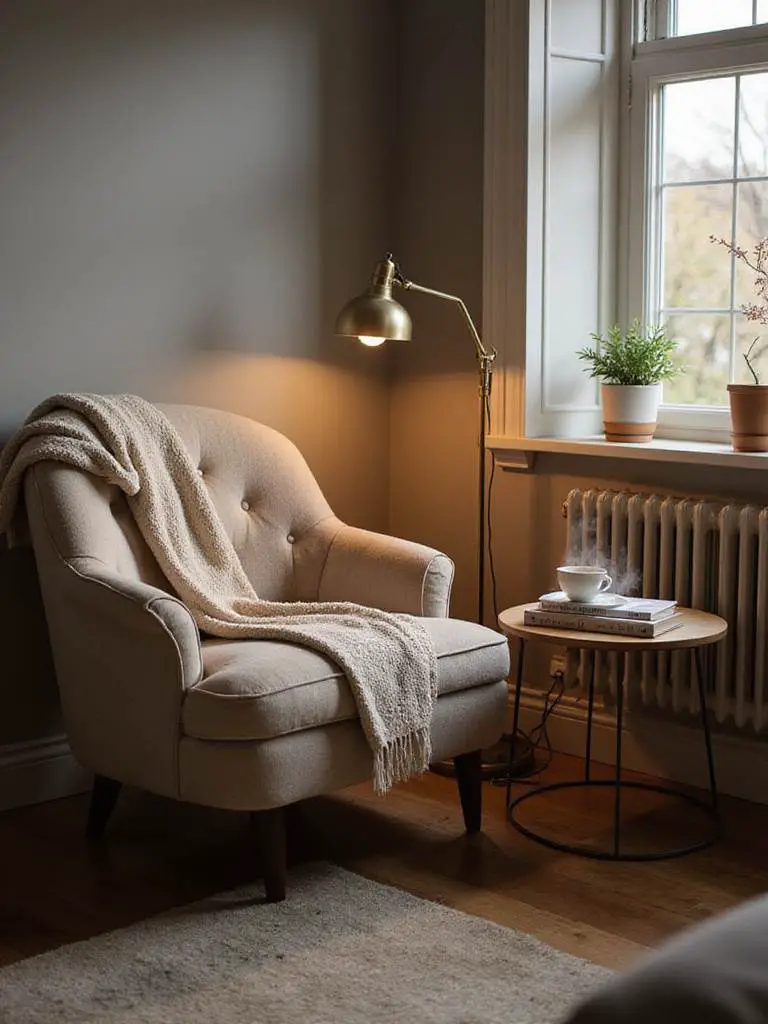
Climate control systems that learn your preferences and adjust automatically can maintain optimal sleeping temperatures without constant manual adjustment. Smart lighting that gradually dims in the evening and slowly brightens in the morning supports healthy circadian rhythms. Automated window treatments can provide privacy and light control without requiring you to get out of bed.
The integration should be invisible and intuitive. Voice controls eliminate the need for bedside switches and remotes. Sensors can detect when you enter or leave the room, adjusting lighting and temperature accordingly. The goal is creating an environment that responds to your presence and preferences without requiring conscious management.
14. Design Custom Built-ins for Seamless Integration
Built-in elements create the most seamless integration between storage, function, and aesthetics. Unlike furniture that sits in a room, built-ins become part of the architecture, creating clean lines and maximizing space efficiency while providing exactly the functionality you need.
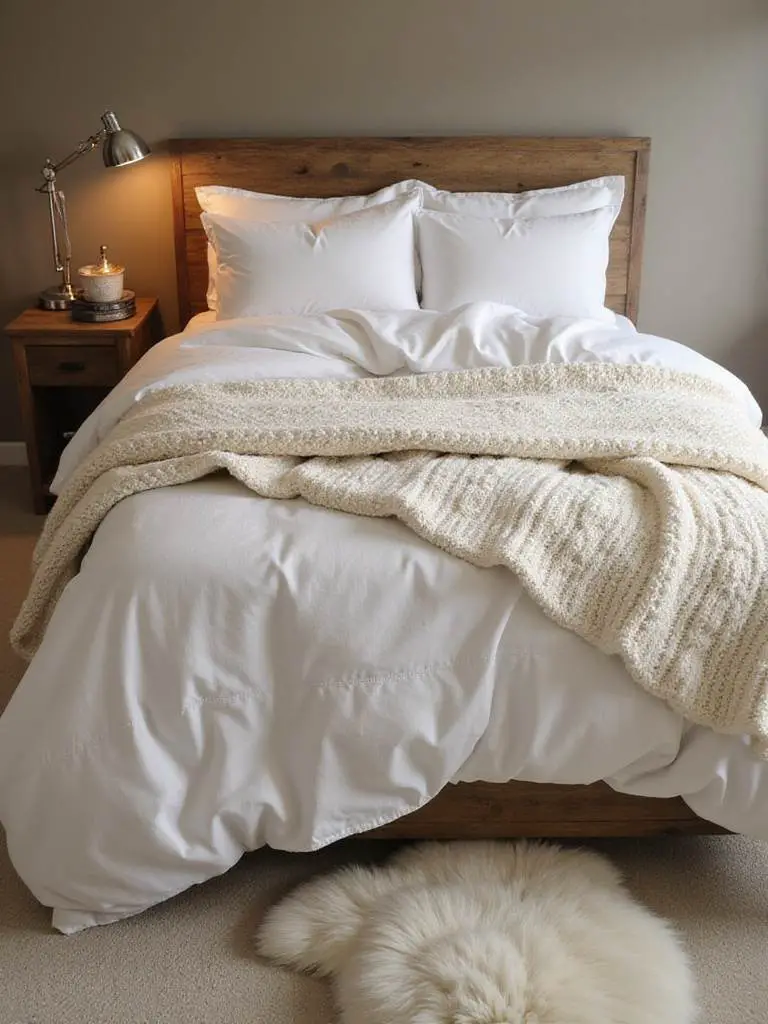
A built-in headboard wall can incorporate nightstands, lighting, and storage in one cohesive element. Window seats with integrated storage make use of otherwise awkward spaces while providing additional seating and a cozy reading nook. Built-in wardrobes can be designed to blend invisibly with the wall treatment, maintaining clean sight lines while providing abundant storage.
The key to successful built-ins is thinking beyond basic storage to consider how these elements can enhance the room’s proportions and flow. A built-in bench at the foot of the bed provides a place to sit while dressing and can house extra bedding. Recessed shelving creates display opportunities without protruding into the room’s circulation space.
15. Create Seasonal Adaptability Through Flexible Design
A bedroom that can adapt to seasonal changes feels fresh and responsive throughout the year while reducing the need for major redecorating. This adaptability comes through choosing foundational elements that work year-round while incorporating seasonal accents that can be easily changed.
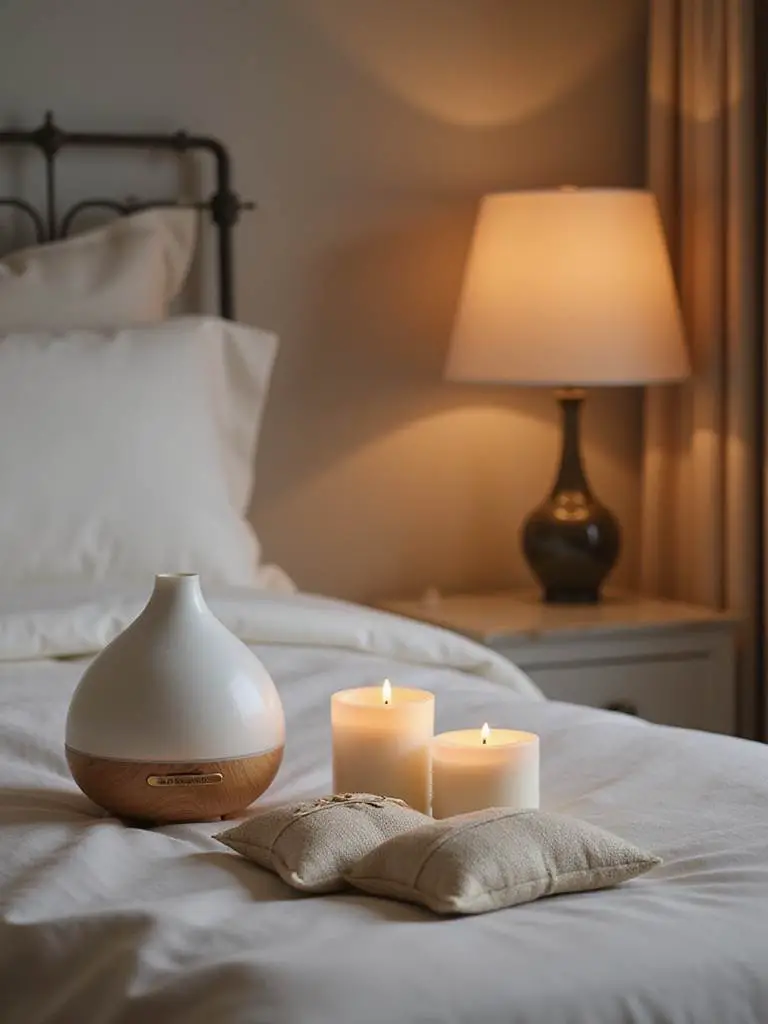
Neutral base colors and natural materials provide a stable foundation that works with different seasonal palettes. In summer, lightweight linens in cool colors create a fresh, airy feeling. Winter might call for richer textures and warmer tones through throws, pillows, and artwork. The key is having systems in place that make these transitions easy and natural.
Storage for seasonal items should be planned from the beginning. Built-in drawers or closet systems that can accommodate bulky winter bedding during summer months, and lightweight summer linens during winter. This rotation keeps the bedroom feeling current and appropriate to the season while maintaining the organized, peaceful environment essential for rest.
16. Balance Minimalism with Warmth and Personality
The challenge of modern bedroom design lies in achieving the calm that comes from simplicity without creating spaces that feel cold or impersonal. True minimalism isn’t about emptiness—it’s about intentionality, choosing fewer elements but ensuring each one is meaningful and beautiful.
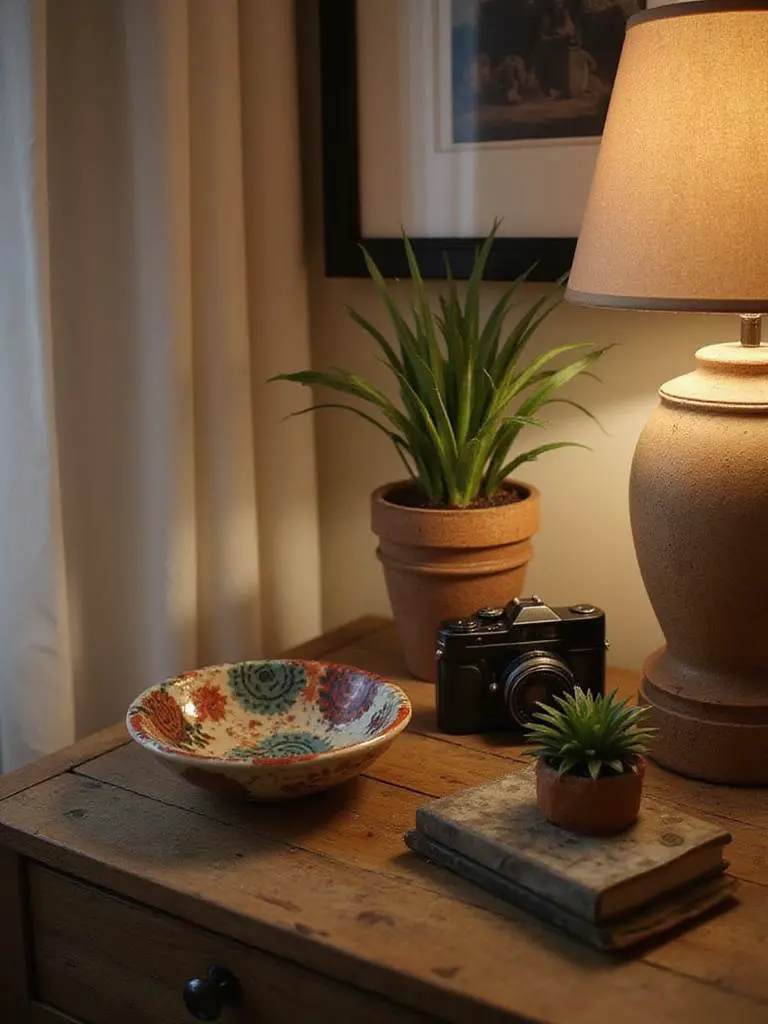
Warmth comes through material choices and subtle details rather than quantity of objects. A single, beautiful wooden nightstand might provide more warmth than multiple pieces in synthetic materials. Natural textures—linen, wool, stone, wood—inherently feel more welcoming than manufactured alternatives. The goal is creating richness through quality rather than quantity.
Personality emerges through careful curation rather than abundant display. A single piece of meaningful artwork might express more about your character than a wall full of prints. The books on your nightstand, the texture of your bedding, the patina of a vintage lamp—these details accumulate to create a space that feels distinctly yours while maintaining the visual calm essential for rest.
17. Establish Healthy Air Quality Through Natural Methods
Indoor air quality significantly impacts sleep quality and overall health, making it a crucial consideration in bedroom design. Natural methods of air purification and circulation often work more effectively and quietly than mechanical systems while contributing to the room’s aesthetic appeal.
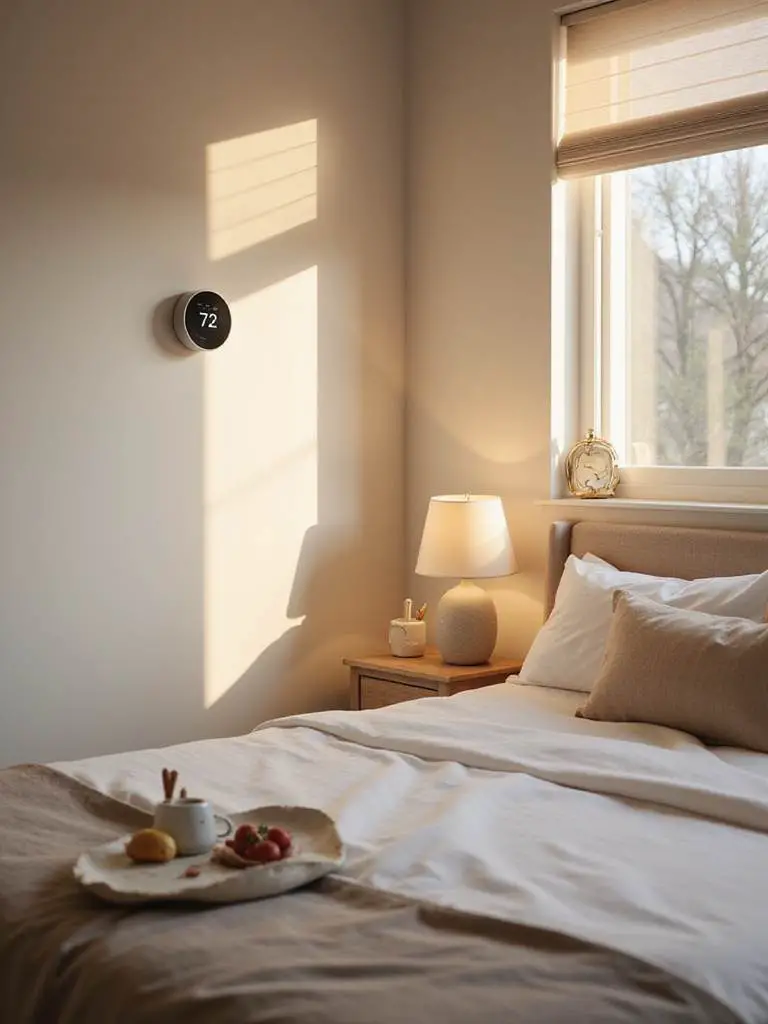
Strategic plant placement can improve air quality while adding life and color to the space. Snake plants, spider plants, and peace lilies are particularly effective at removing common indoor pollutants while tolerating the lower light levels typical of bedrooms. Cross-ventilation through thoughtfully placed windows can provide natural air circulation, reducing the need for mechanical ventilation systems that can be noisy and disruptive to sleep.
Material choices also impact air quality. Natural materials like solid wood, organic cotton, and wool tend to off-gas fewer chemicals than synthetic alternatives. Low-VOC paints and finishes reduce chemical emissions. Natural fiber rugs and window treatments contribute to better indoor air quality while providing the aesthetic benefits of organic materials.
18. Design for Acoustic Comfort and Sound Management
Sound management in bedrooms requires addressing both unwanted noise from outside and creating pleasant acoustic conditions within the space. Hard surfaces reflect sound, while soft materials absorb it. The goal is creating an acoustic environment that promotes rest while maintaining the aesthetic qualities you desire.
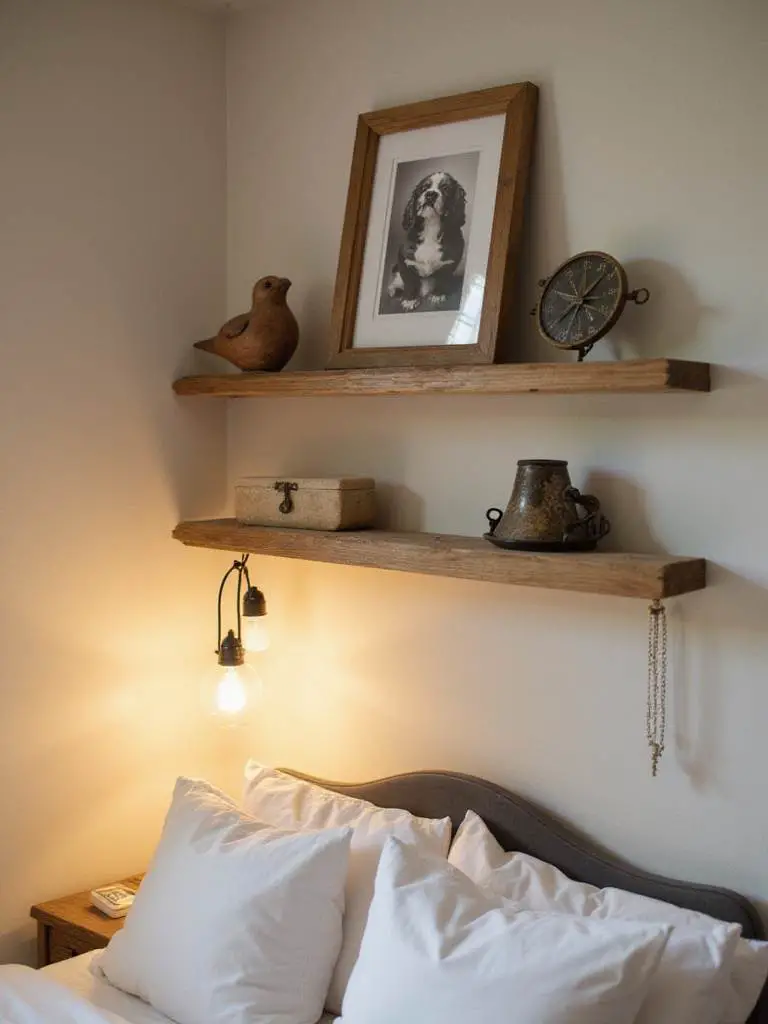
Textile layers naturally improve room acoustics. Heavy curtains, upholstered furniture, and area rugs all absorb sound, reducing echo and creating a more intimate acoustic environment. Wall treatments like fabric panels or natural wood can provide sound absorption while adding visual interest. The key is integrating these acoustic treatments seamlessly with the room’s design rather than adding them as obvious afterthoughts.
Consider the sources of disruptive sound and address them systematically. Traffic noise might require heavier window treatments or double-pane glass. HVAC systems should be evaluated for noise levels and possibly upgraded to quieter alternatives. Even small details like soft-close drawers and cabinet doors contribute to a more peaceful acoustic environment.
19. Incorporate Cultural Elements That Reflect Heritage
Personal spaces should reflect the full richness of your cultural background and experiences. Incorporating elements from your heritage or cultures you admire creates depth and meaning while making your bedroom feel authentically yours. This integration requires sensitivity and intentionality rather than superficial decoration.
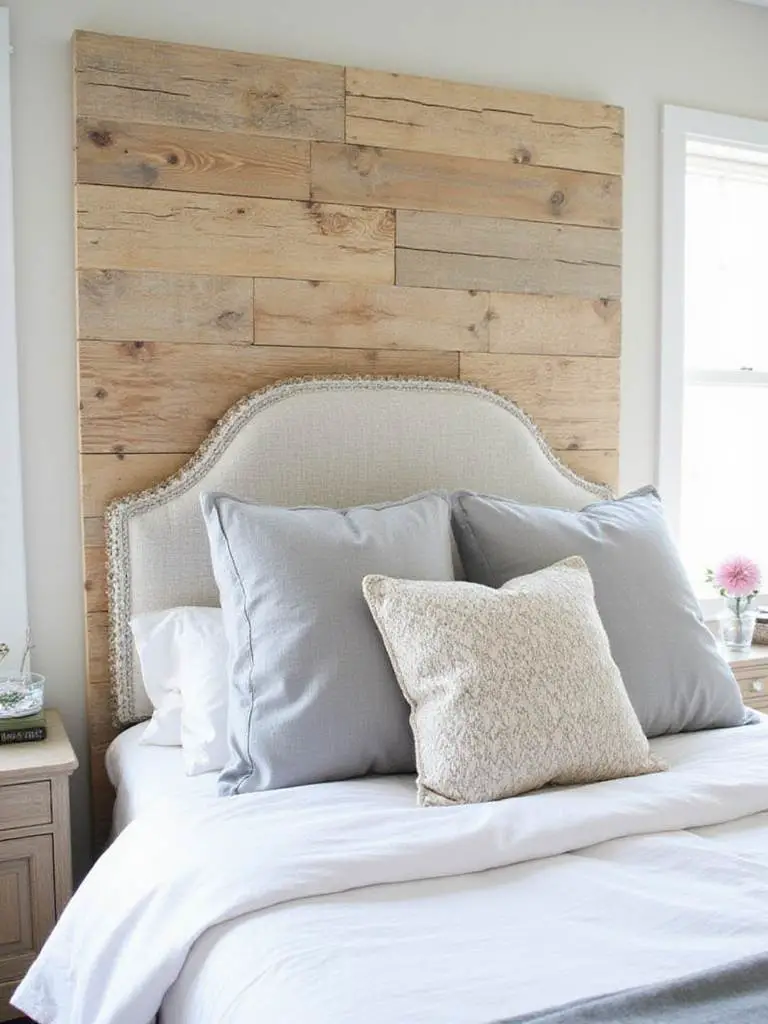
Textiles often carry the strongest cultural signatures—a vintage kilim, hand-woven blankets, or traditional embroidery can add both beauty and meaning to a bedroom. These pieces often feature natural materials and time-tested construction methods that align with sustainable design principles while providing unique aesthetic character that can’t be found in mass-produced alternatives.
The key is understanding the stories behind cultural elements and incorporating them respectfully and meaningfully. A single, beautiful piece with personal significance often has more impact than multiple decorative objects used purely for their exotic appearance. The goal is creating a space that honors your heritage while feeling cohesive and contemporary.
20. Plan for Aging in Place and Changing Needs
Thoughtful bedroom design considers not just current needs but how requirements might change over time. This forward-thinking approach creates spaces that can adapt to different life stages without requiring major renovations. Universal design principles can be integrated subtly, enhancing functionality for everyone while maintaining aesthetic appeal.
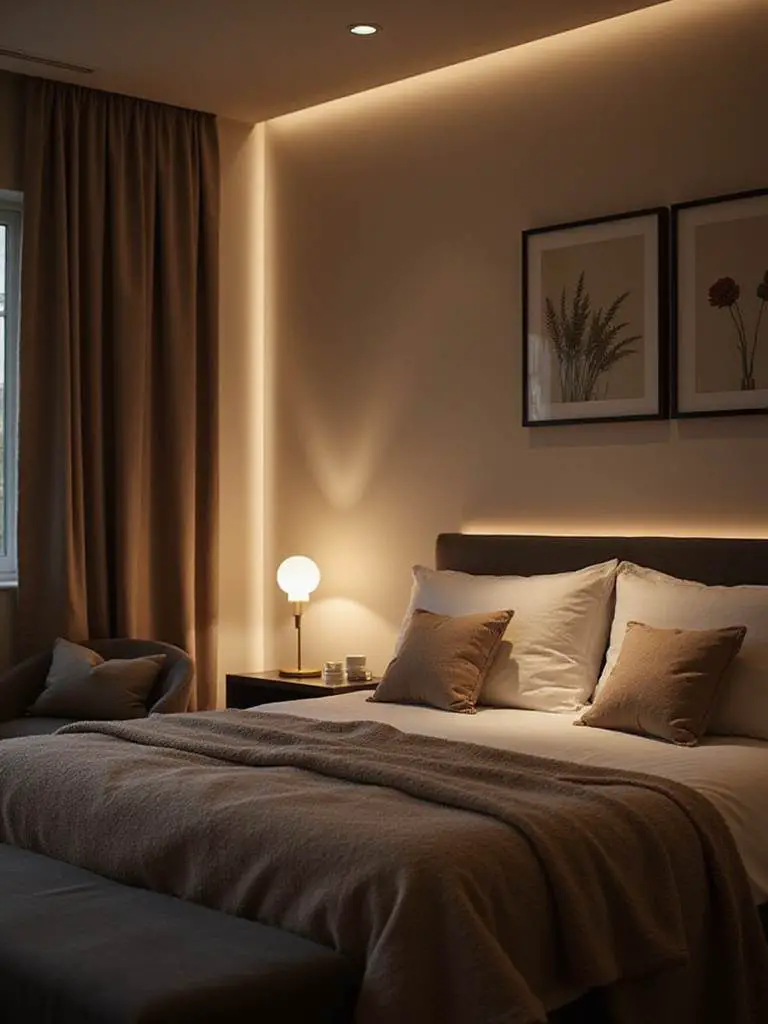
Lighting controls should be easily accessible from multiple locations, including bedside switches and main entries. Flooring should provide secure footing while being comfortable underfoot. Clear pathways and adequate space for maneuvering become more important over time. These considerations can be integrated invisibly into beautiful design rather than appearing as obvious accommodations.
Storage should be planned for easy access at various heights. Lower drawers and shelves reduce the need for reaching or bending. Pull-out systems make deep storage more accessible. These features benefit everyone immediately while providing crucial functionality as needs change over time.
21. Create Outdoor Connections for Extended Living Space
When possible, creating visual and physical connections between bedroom and outdoor spaces enhances the sense of spaciousness while providing access to fresh air and natural light. This connection can be as simple as a well-positioned window with a beautiful view or as elaborate as a private balcony or patio accessible from the bedroom.
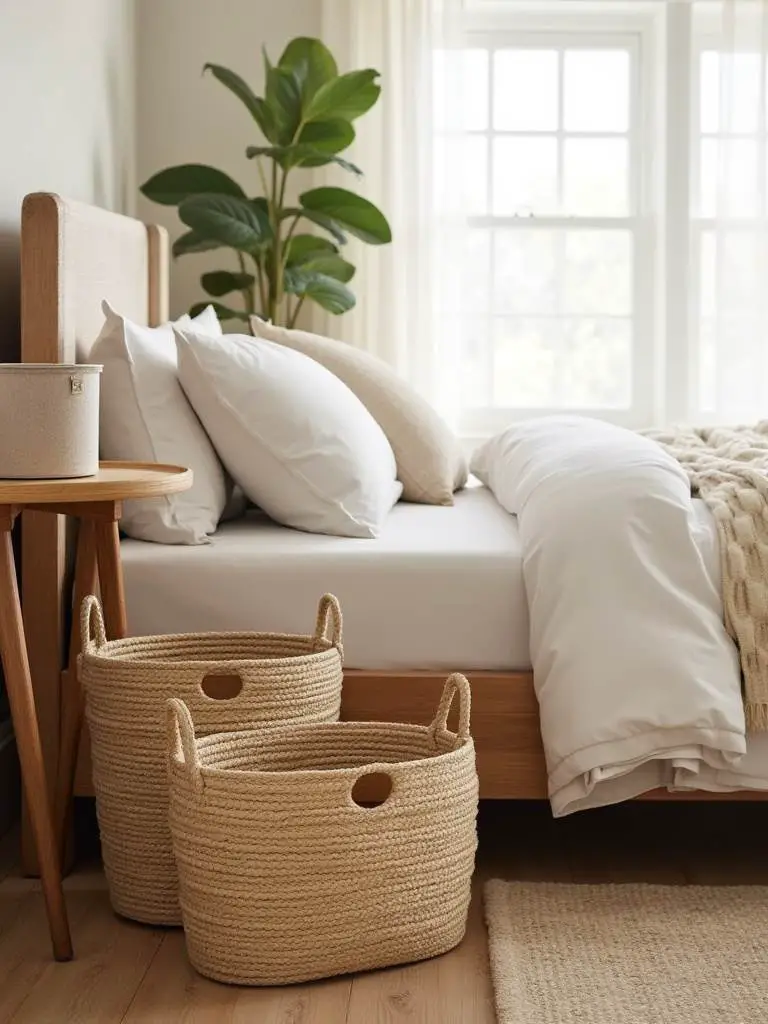
Large windows or sliding doors that open to outdoor spaces create an immediate sense of expansion and connection with nature. Even when outdoor access isn’t possible, positioning the bed to take advantage of views can create a sense of connection with the landscape beyond. Privacy screening using plants or architectural elements can provide seclusion while maintaining the outdoor connection.
Consider the transition between indoor and outdoor spaces. Similar materials or colors can create visual continuity. Outdoor elements like weather-resistant furniture or planters can extend the bedroom’s aesthetic into adjacent outdoor areas, creating a seamless flow between inside and outside.
22. Establish Maintenance Routines That Preserve Beauty
The most beautiful bedroom design will deteriorate without proper maintenance routines. Building care and preservation into your daily and seasonal routines ensures your space continues to feel fresh and welcoming while protecting your investment in quality materials and furnishings.
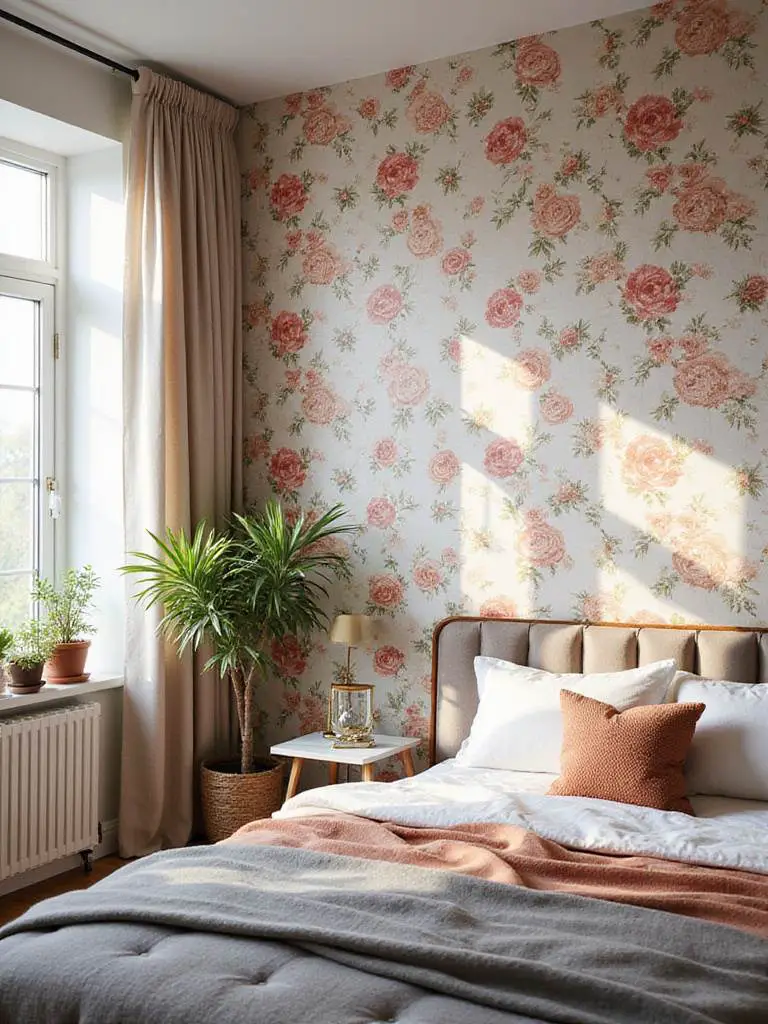
Daily routines should be simple and sustainable: making the bed, returning items to their designated homes, opening windows for fresh air circulation. Weekly routines might include dusting, vacuuming, and caring for plants. Seasonal routines could involve rotating textiles, deep cleaning, and assessing what needs repair or replacement.
Choose materials and finishes that age gracefully and are easy to maintain. Natural materials often develop beautiful patina over time when properly cared for. Quality construction in furniture and built-ins reduces the need for frequent repairs. The goal is creating systems that maintain beauty through use rather than fighting against the natural wear of daily life.
Conclusion
Creating a dreamy bedroom goes far beyond following trends or copying magazine layouts—it requires understanding how design choices impact your daily well-being and long-term satisfaction. These bedroom aesthetic ideas work together to create spaces that feel both beautiful and deeply personal, supporting your need for rest while reflecting your authentic self.
The most successful bedrooms balance multiple considerations: comfort and beauty, functionality and serenity, personal expression and timeless appeal. By focusing on natural materials, thoughtful lighting, and sustainable choices, you create a foundation that will serve you well for years to come. The key is approaching each decision with intention, considering not just how something looks but how it will make you feel and function in your daily life.
Your bedroom should be a sanctuary that welcomes you home each evening and sends you into the world refreshed each morning. Start with the elements that speak most strongly to you—perhaps the calming earth tones that ground your space, or the layered lighting that adapts to your rhythms throughout the day. Remember that the best bedroom aesthetic ideas are those that enhance your unique lifestyle while creating the peaceful retreat you deserve.
